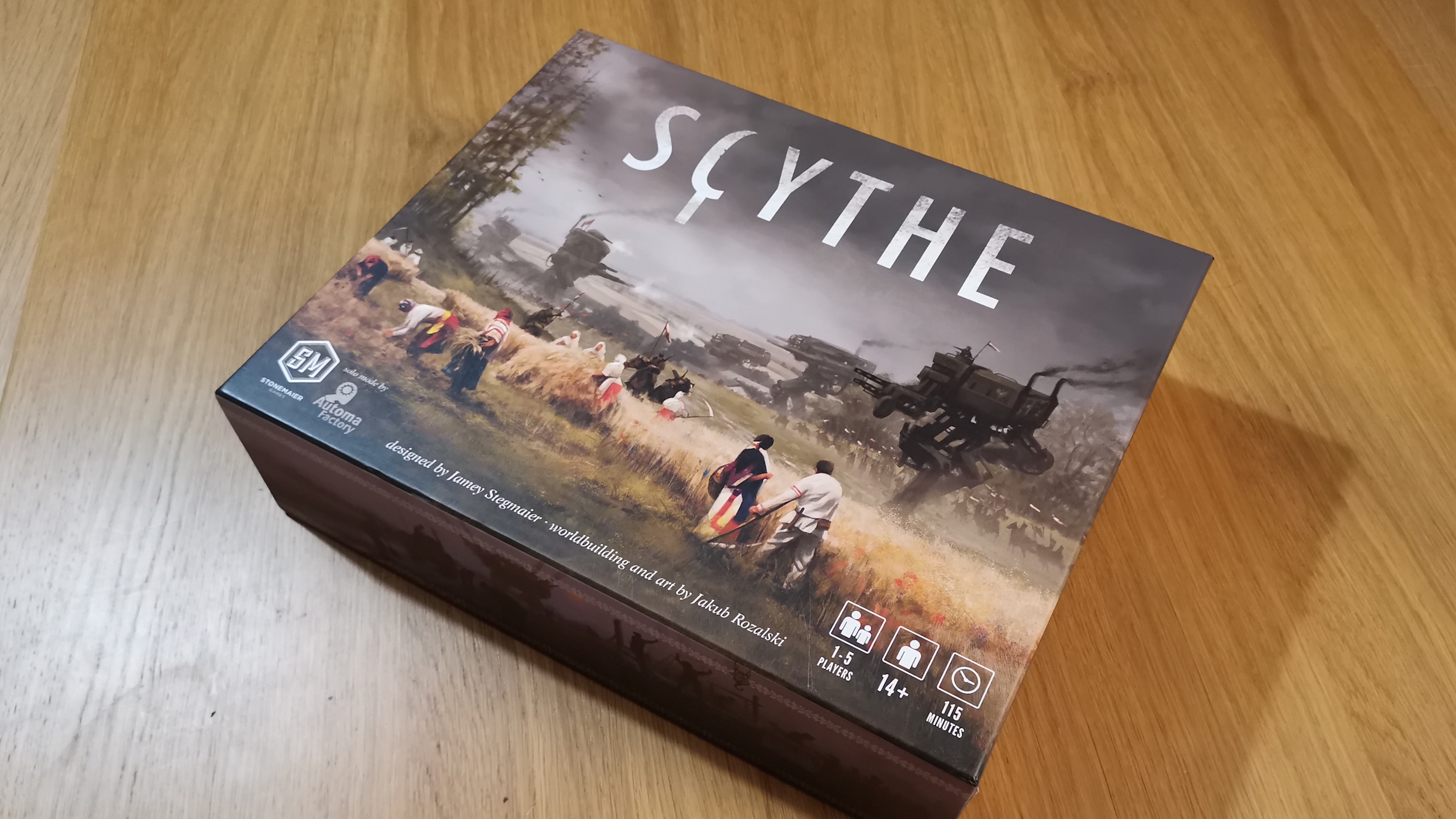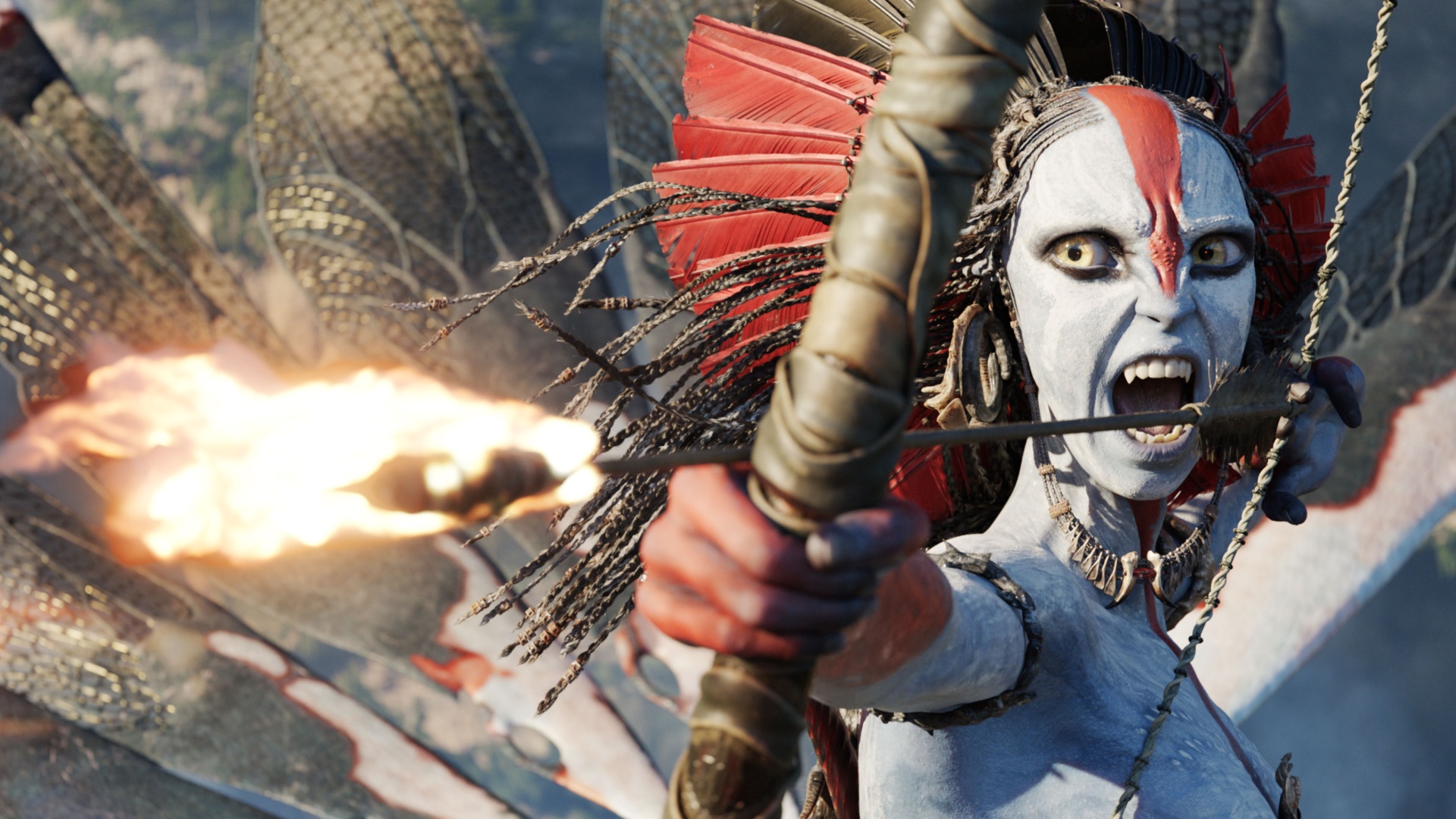12 video game skyboxes that are far cooler than you think
Things are looking up
Cloud gaming
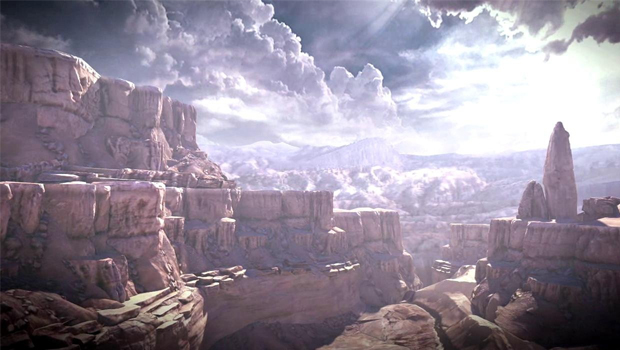
Of all the constituent elements of a video game, the skybox is one of the most tragically overlooked. Probably because it doesn't traditionally come with explosions or lasers or boobs, or any of that other 'exciting' stuff. And that's a damn shame. Because while essentially just one giant wraparound texture used to give the illusion that a game exists in a big wide world, the skybox is capable of far more than simply stopping multiplayer maps from trailing off into abstract blackness.
A smart skybox can do a lot of great stuff. It can add serious atmospheric weight to a game. It can build emotional or narrative subtext. It can guide the player better than any in-game map and it can even provide hints about a game's sequel long before the current one is even done with. Seriously, these things are way cooler than you think. We can prove it. Click on and we'll do just that.
Halo The this aint no corridor shooter skybox
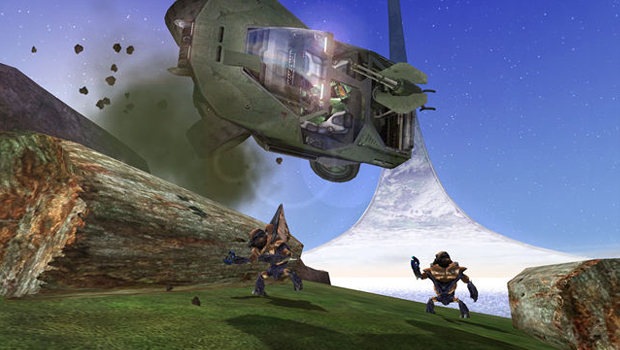
Its 2001. Console FPS is taking off as the reverberations of Goldeneyes brick-skulled industry headbutt continue to shake the landscape. But the limitations of the era mean that shooters are still the domain of corridors, with tiny outdoor draw distances that a two-legged mouse could comfortably sprint. Halo however, isnt having any of that.
The first level is business as usual. Corridors aplenty and enemies piling through doorway choke-points like lemmings with a hankering for plasma burns. But its all a bluff. Halo is really a game of vast tactical scope, free-flowing battlefields and ever-evolving improvisational combat. And it makes that abundantly clear at the start of level two before single shot has been fired. Step out of the escape pod and Halos next-gen aspirations rush up to hit you in the face like a stampede of really shiny elephants. That vast, dusky sky wrapped loosely around the huge, airy environment is a weapons-grade statement of intent. Littered with immense, distance objects, an ocean of stars and the endlessly stretching eponymous Halo itself, it evokes a sense of space, scale and freedom previously unimagined.
Half-Life The skybox of narrative drive

Until about two-thirds of the way through, Half-Life is a largely subterranean corridor shooter. Its oppressive, uncompromising, and makes serious demands of the player every step of the way. But just as you come to accept its claustrophobic brutality as the norm (bar a brief, violent sojourn outside under cover of darkness), it provides the briefest flash of something else. The games tenth chapter sees Gordon ambushed, beaten and left for dead by the incoming military clean up team. Escaping the steel jaws of an industrial waste compactor, he then earns the shortest glimpse of the bright, blue desert sky before heading back underground.
Although it lasts for the briefest of periods and is tantalisingly curtailed by the walls of a narrow canyon, the sense of impending freedom, of a whole wide world just above, is an incredibly powerful motivator to push on. Later, the game introduces huge expanses of sky during its fearsome surface combat sections, building greater motivation alongside an uncomfortable feeling of exposure. Its a powerful and uneasy set of emotions to give a player during a games more hectic sections, and a fantastic example of Valves environmental storytelling abilities.
Half-Life 2 The skybox of silent oppression
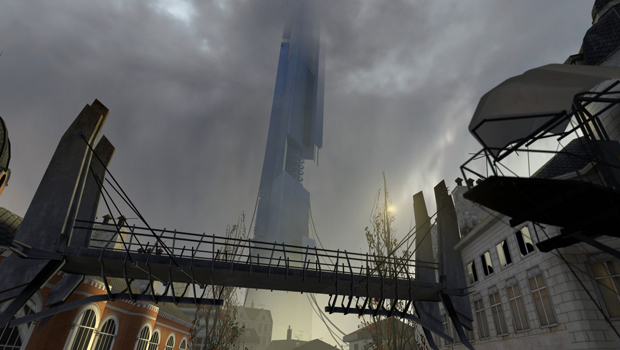
Right from the start of Half-Life 2, something is clearly very wrong. Exploring the City 17 railway station an indeterminate amount of time after the first game, the building is an uncomfortable clash of antiquated human architecture and dark, hard-edged alien technology. Between that and the faceless fascism on show, Gordon clearly no longer resides in Kansas. But theres an even greater sign of Earths new wrongness on the way.
Weekly digests, tales from the communities you love, and more
Step outside and the same visual juxtaposition that proved so unnerving in the railway station is painted across the skyline on a vast scale. Traditional European-style buildings cower below an immense black slab as the Combine Citadel stretches far into the murky clouds. Wherever you go in the city it dominates the horizon, a constant symbol of oppression propagating a perpetual sense of surveillance. Nowhere in the city is safe. Youre always being watched. In a way, the city itself is watching you. The Citadel can even change shape to indicate its level of alertness, essentially remodelling the look of the city to reflect its mood. Better pick up that can then.
Journey The skybox of hope and benevolent guidance
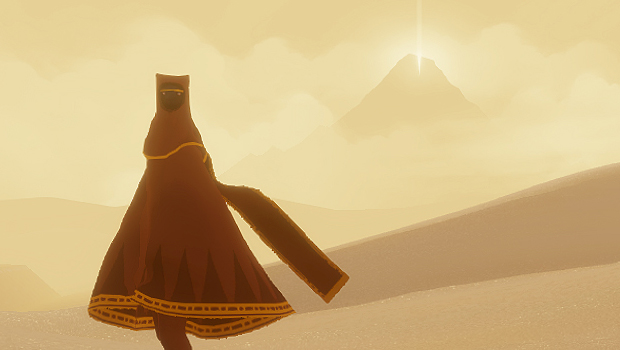
On the subject of skylines dominated by a single object, theres a much more benevolent version in Journey. The eventual mountaintop end point of the protagonists quest shines across the sky like a beacon during every step of the way. Its not just about navigation, although in that respect its certainly an effective, subtle, and highly economical piece of game design. No, you see the mountain is also an important piece of narrative design.
The pure white light of the storys eventual end point shines like the reassuring light of home. At first, in the brightly sunlit open desert of the games early sections, it is simply a waypoint. Later though, as the dangers of the world close in and our twin protagonists must pull together with everything they have, it becomes a symbol of hope. As the dangers of the world rise up and the darkness draws in by way of sandstorm, cavern and frozen winter sky, the mountain shines with its constant, unfailing light. Keep pushing on and it will make things alright. Keep moving through the darkness, because home isnt far away. Its always just ahead.
Tomb Raider 2013 The skybox of character development

Tomb Raiders early hours are dark, overcast and gloomy, with the sky itself all too often masked by a thick canopy of forest. But as Lara ascends (both literally and figuratively), things change, culminating in two landmark sky moments toward the end of the first act. The first is Laras reward for surviving the night, bestowed as her developing skills deliver her through capture, escape and the ever-present threat of canine homicide, bringing her out of a dark passage (again literally and figuratively) and into the brilliant blue of a snowy mountain skyline. Its the first daylight vista in the game and its a beauty, delivered with deliberate visual emphasis.
But Laras not done yet. A little while later she reaches her first real character-defining moment. Forced to climb a rickety, crumbling radio mast in order to send a distress signal, she seems unaware of the acts wider significance. The game however, certainly isnt. As she fearfully makes her way upwards, the camera pulls out to reveal mile upon mile of one of the warmest, most flat-out beautiful skylines weve seen all generation. And its all Laras. She's earned it and she owns it.
Secret of Mana The crap just got real skybox
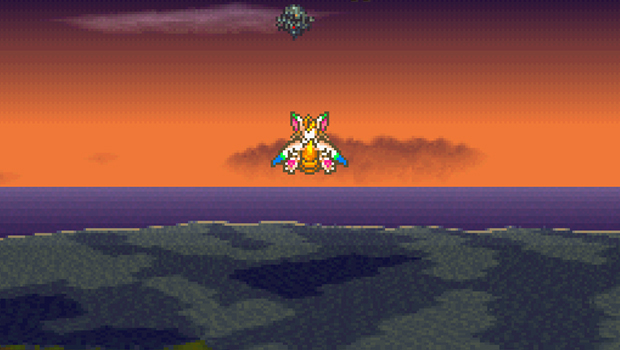
Youve been playing Secret of Mana for tens of hours. Youve made new friends, conquered new enemies, liberated kingdoms, saved Santa and thwarted the Empires attempts to resurrect the ancient dread of the Mana Fortress. Youve also befriended a dragon called Flammie, who has flown you all over the world to the tune of the games remarkably upbeat flight theme. Its a time of hopeful empowerment alright, and Flammies 3D flight sequences are a major landmark in your strengthening partys ongoing journey. Having a big blue sky to navigate to your hearts content is one hell of a reward for progress.
But then the Empire manages to restore the Mana Fortress. Poop has interfaced with fan most egregiously, and the whole world hangs in the balance. Make no mistake. Act three is in full swing and it means business. You run to Flammie and make ready to head over to the Fortress. You take off, but instead of the expected blue skies and jaunty sounds, you get an ominous, burning red horizon and this. Better get busy.
Batman: Arkham Asylum/City The cross-game drama skybox
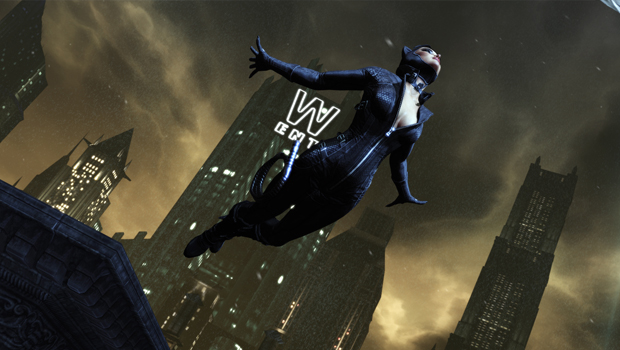
Look to the skies in the first game and youll see the Gotham shore on the horizon, with the shimmering lights of Wayne Tower acting as a distant beacon. This emphasizes Arkham Asylums Metroid-style sense of isolation, but it also leads into a strong piece of ambient storytelling in the second game.
Arriving on the coastline in Arkham City, the same distant Gotham skyline from Arkham Asylum is visible, but were now much closer to it. Wayne Tower is there again, but now it only feels a few blocks away. With Arkham Island now visible when looking back the other way, Batmans physical journey between one game and the next is being mapped out by the scenery. But so is a sense of dramatic escalation. Arkham Asylums story was a localised event, its distance from Gotham physically stated in-game. But now in Arkham City trouble is brewing on a grander scale, right on Gothams doorstep. Whichever way Batman looks the horizon is a constant reminder of that, as well as a strong hint of the how high the stakes might be in part three
Red Dead Redemption The subtextual skybox
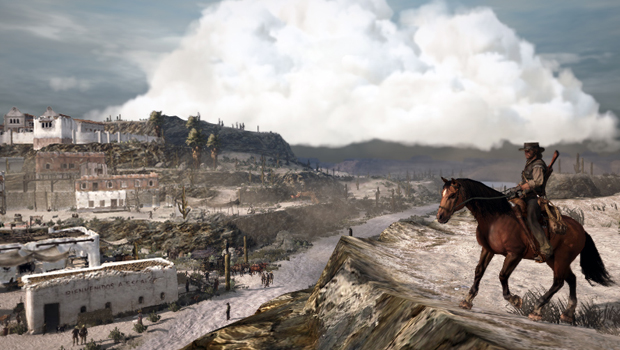
To say that the setting is the real star has become a hoary old media journalism clich, but in relation to Red Dead Redemption the sentiment can be expressed without shame. Red Dead isnt just the tale of a troubled cowboy on a series of wild west quests. Specifically its about the death of the old west at the hands of an increasingly civilised America. Its about the inherent loss of freedom that comes when a country becomes more organised. Its about a man of the old ways facing up to his anachronistic nature and mourning the loss of his place in the world.
For those concepts to ring clear and true, there needs to be a constant reminder of whats at stake. In Red Dead Redemption, that beautiful, untamed, dangerous freedom is represented by the stunning natural environment. Everywhere you look, youre reminded of whats being encroached upon and whats at risk. And no part of the games visual design evokes the wild freedom of the old west more powerfully than its huge blue, windswept, cloud-filled, star-soaked sky.
Skies of Arcadia The inverted wraparound skybox world
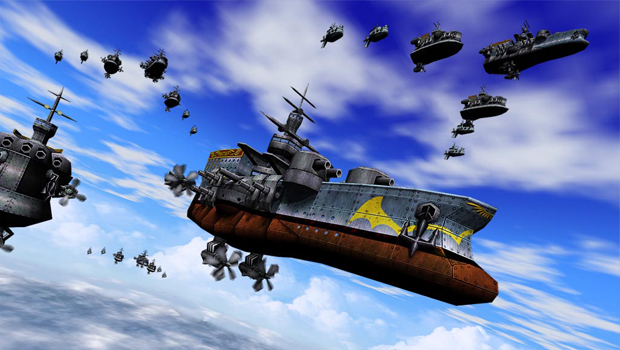
The usual configuration of the noble video game skybox consists of a plausible sky colour (these usually sit within the red-orange-yellow-blue-grey spectrum, provided the game is set on a planet with a sensibly coloured sun) fading up to whatever level of cloud cover the games devs have deemed appropriate. Sun, moon and miscellaneous celestial bodies optional.
This happens because thats how the real-life sky tends to look when standing on the real-life ground. But what if the game in question contains no ground? What if the game is Skies of Arcadia , and is thus set entirely within the sky and across a series of inexplicable floating islands? In that case the entire physics-disrespecting gameworld must become one giant skybox, built upside down so that the clouds below mask any unfortunate issues related to the cosmic impossibility of the situation. And in order to create distinguishable locations within the vast expanse of blue, youll also need skyboxes within skyboxes, accessible from the main skybox. And then a separate set of combat skyboxes for close-quarters airship battles. Also, skyboxes. Its basically skyboxes all the way down.
Ecco The Dolphin: Defender of the Future The double skybox
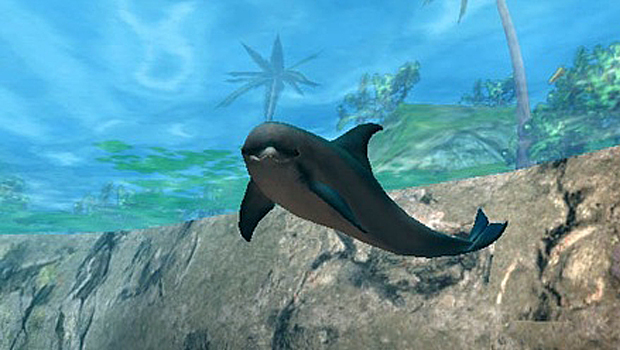
As weve established on the preceding pages, video game skyboxes can be brilliant for evoking a sense of scale and freedom. The Dreamcasts Ecco the Dolphin game goes one better by providing a two-step solution. Being an aquatic adventure playing out in the free-roaming 3D space of the ocean, Segas tuna-net troublemaker simulator contains a bounty of free-flowing, open ended traversal as standard. With its cool blue environments illuminated by the dappled sunlight filtering through ocean surface above, Ecco the Dolphin: Defender of the Future is effectively a playable skybox by design.
But it doesnt stop there. Hit the surface fast enough and youll burst through into the sunlit, water-free environment above. And what will you find up there? Another skybox of course, this time made up of actual sky and unfiltered rays. Ecco is by default a game of delicious summery freedom and pineapple-flavoured sunlight, but with a whole extra level of the stuff up above to explore its a two-for-one deal. We know Sega is renowned for its traditional blue-skied aesthetic, but this time it went quite literally above and beyond.
BioShock - The "this is seriously an underwater city" skybox
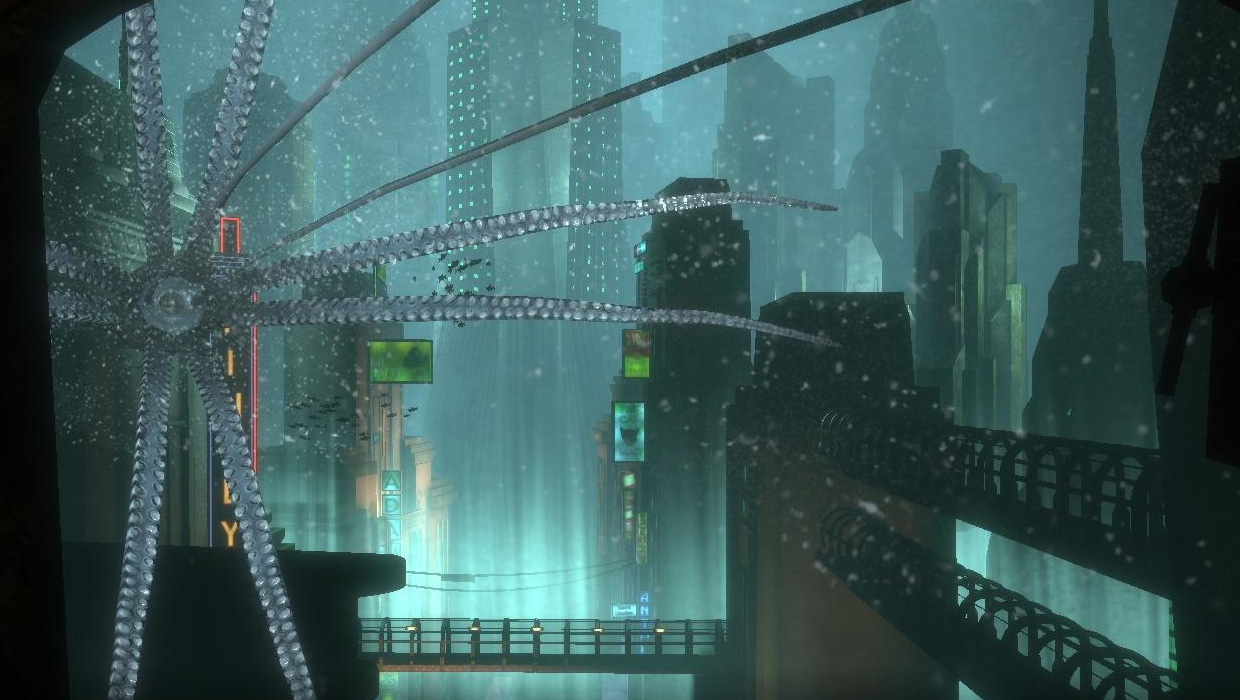
Without Rapture, BioShock isnt all that exciting of a game. The atmosphere of the underwater dystopia is what propelled the shooter onto our list of the best games ever made, and while much of that setting is built as you crawl through the rusted hallways and flooded corridors, more of it is outside in the game's strikingly atypical skybox which we suppose you should probably call an oceanbox, in this case.
You only explore a small fraction of Rapture as you play through BioShock--a majority of it exists outside. You can see it as you look out the windows, reminding you that you are, indeed, miles below the ocean surface. Seeing the never-ending ocean is a constant reminder of Andrew Ryan's hubris, and works to enhance the feeling of claustrophobia as you discover the truth behind the crumbling metropolis-that-was.
World of Warcraft - The "YOU ARE DEAD" skybox
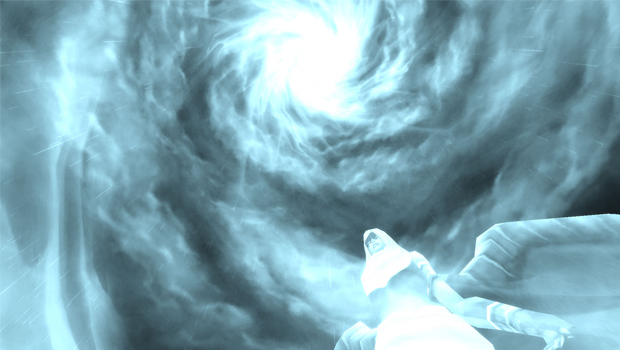
Rare is the game that tackles the true bleakness of the unfulfilled afterlife. So you wouldnt expect a look into the starkness of purgatory from an MMO, let alone one as colorful and stylized as World of Warcraft. But upon dying to your first low-level mob, youre thrown into an unsettling landscape devoid of the hues youre used to, ushered in by the angel of death known as the Spirit Healer. Running back to your distant corpse, you look up--and youre horrified.
Instead of the serene blue sky youre used to, the upper atmosphere has morphed into a swirling vortex, slurping up everything above you into a white void. Theres no sun, no moon--only emptiness. Its a startling sight the first time you witness it, and with every death afterward, youll hustle back to your corpse lest you spend another moment in this godforsaken abyss. Its a demonstrative moment of how even the starkest skybox, when used in the right way, can evoke emotion from the player.
Into the wide blue yonder
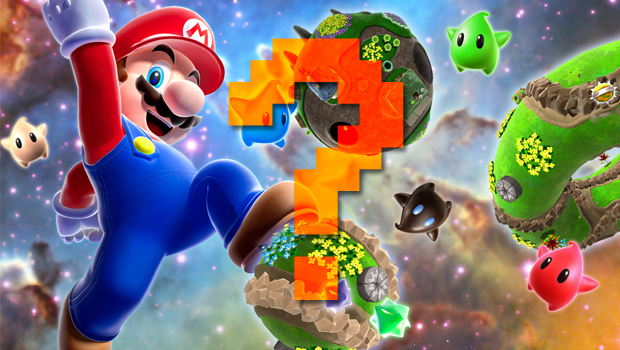
So, any we've missed? Any other favourite video game skies you think are worthy of tribute or deserving of analysis? Let us know.
And while you're here, check out some of our semi-related features like 28 of the most favourite video game trees ever and Six great video games with no graphics.

